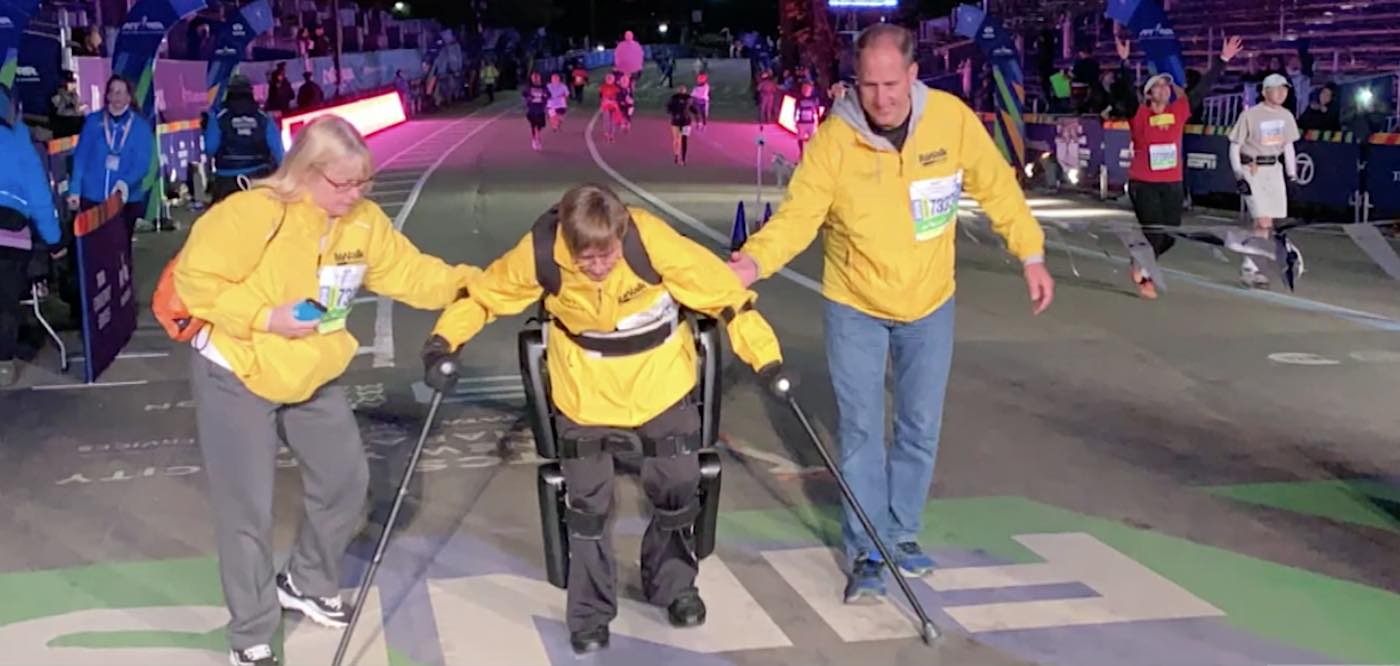Retired Army Sergeant Theresa Vereline just completed the New York City Marathon without use of her legs, or a wheelchair. Instead, Vereline became not just the first ever paralyzed American to finish the famous NYC event, but the first veteran in the world to complete it with an exoskeleton.
“Words cannot express the feelings I had crossing the finish line,” Vereline said in a press release. “This has been a dream of mine, and I hope I can serve as an inspiration to others that you too can achieve what seems like the impossible — especially all of the disabled children I meet across the country”.
Happy-footed Vereline completed the first 10 mile stretch of the marathon which runs through each of the 5 boroughs of New York City, over the course of three days under the supervision of the New York Road Runners, the organizers of the marathon.
Walking 10 miles of the 26.2 on Nov. 1st, and another 10 miles on the 2nd, she knocked out the last 6.2 on the day of the actual marathon. She crossed the finish line on November 3rd at 6:35 PM.
The ReWalk 5.0 exoskeleton suit is designed to help paraplegics move around with the help of crutches for balance, and they couldn’t have asked for a better spokesperson than Vereline.
RELATED: Woman Who Lives With 27 Sick Dogs Dubbed ‘Miracle Worker’ After Getting Paralyzed Pups to Walk Again
The U.S. Department of Veterans Affairs established a national procurement policy for retired service members who are eligible to receive one of the life-changing devices. 65-year-old Vereline, who became paralyzed in 2011 was the first veteran to receive a device following FDA clearance. She has traveled the world to speak about the impact the exoskeleton has had on her life and health.
“We are incredibly proud of her. Her achievement at the marathon and her efforts to help others with disability are inspirations to us all,” Andy Dolan, ReWalk’s vice president of marketing, told CNET in an email exchange.
Therapeutic exoskeletons are beginning to attract a lot of research dollars, with robotics companies like ReWalk, Ekso Bionics, Rex Bionics, and SuitX all offering models to help people with spinal cord injuries get moving again.
MORE: Breakthrough Device Restores Visual Perception to the Blind So They Can See Light and Motion
Patients with spinal cord injuries often require far more routine care than others. They suffer from increased risk of cardiovascular disease, urinary tract infections, bone-density loss, chronic pain, and pressure ulcers. Just being able to stand up and walk around, however unsteady, increases blood circulation and oxygen intake, normalizes and improves ventricular function, and can fortify cardiovascular health.
– Photo credit: CBS Screenshot of photo by Shelby Brown
WATCH an interview with Vereline from CBS News via YouTube…
MOVE This Inspiring News to Your Social Media Feeds…




















